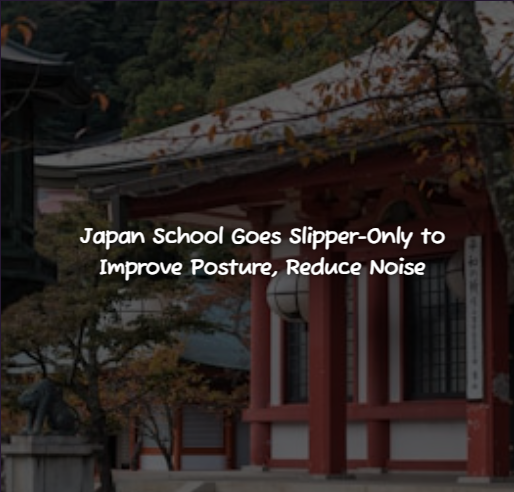Japan School Goes Slipper-Only to Improve Posture, Reduce Noise
Introduction
Understanding Japanese Indoor Slippers
Definition and History
“Uwabaki” (Gesticulate and say “stick” at this point), which are the Japanese indoor slippers, have become an important part of the culture of Japan for a long period.They are designed specifically for indoor use and are typically made from soft materials like cotton, synthetic fibers, or natural fibers. Such slippers are not only pleasing to walk in but are rather functional, helping maintain floors clean as they protect from dirt and dusts.
The history of uwabaki dates back to the Heian period (794-1185 CE), when samurai warriors wore them as a symbol of respect and humility. And so, the fact that slipping on inside the house is conveniently practiced has become a custom in Japanese olden houses using tatami mats as their floor.Today, uwabaki are a common sight in schools, temples, shrines, and many businesses across Japan.
Cultural Significance
Essentially, students taking off their shoes while in school is permitted and even supported by the people of Japan.It promotes a sense of community and equality among students, as everyone dresses down to the same level. Moreover, to consider the shoes as being separate and to ensure that the sanctity of the space and fellow fellows is taken into account, the shoes are usually removed before entering a room.This practice fosters mindfulness and consideration for others, values deeply ingrained in Japanese culture.
Latest Trends
Benefits of Wearing Japanese Slippers
| Benefit | Description |
|---|---|
| comfort, providing a relaxed fit and ample cushioning for the feet. | Japanese slippers priorit |
| Hygiene | By wearing slippers, individuals can avoid bringing dirt and germs into the home or workplace. |
| Respect | Removing shoes before entering a room demonstrates respect for the space and those around you. |
| Mindfulness | The act of removing shoes encourages mindfulness and awareness of one’s surroundings. |
| Versatility | Japanese slippers come in a variety of styles, ranging from simple designs to fashionable ones, catering to different preferences. |
| Practicality | Uwabaki are ideal for quick trips to the bathroom or kitchen, eliminating the need to put on shoes. |
FAQ
Q: Why do Japanese people wear slippers inside?
A: Stepping into Japanese homes and seeing a pair of slippers is a well-established custom, as people in Japan take pride in maintaining their floors clean and demonstrate humility by standing on slippers.
Q: What are Japanese slippers made of?
A: Originally, Japanese get-a-gates were made of natural fibers such as silk, or cotton.Nowadays, modern materials like synthetic fibers and foam are also commonly used.
Q: Put simply: are Japanese slippers comfortable?
A: Yes, Japanese slippers are designed to be comfortable and provide adequate support for the feet. Lots of designs come with a cushioning effect and pass the arch support to the extended comfort.
Q: Can I wear Japanese slippers outside?
A: Precisely, however doing so is insipidly indelicate.There are specific outdoor slippers designed for wet environments, such as bathhouses or pool areas.
Conclusion
Finally, the habit of putting on slippers while going to school in Japanese is indeed a matter of custom, tradition and convenience.By embracing this custom, students benefit from improved posture, reduced noise levels, and a deeper appreciation for mindfulness and community. With growth of Japanese slippers in global market, it becomes nuetral to recognize about the value and the culture that surrounds this simple but responsible habit.
So, next time you visit Japan or step into a traditional setting, consider donning a pair of uwabaki and experiencing the comfort and tranquility they bring. Who would truly know? You might be taking part in the slipper dancing, probably a very unusual experience to get one off the Japanese culture.




